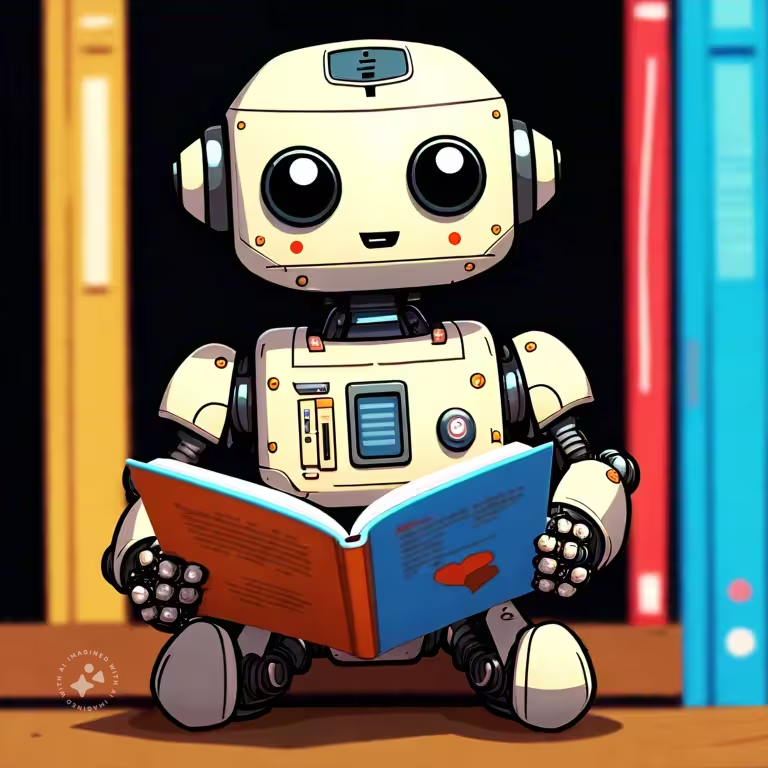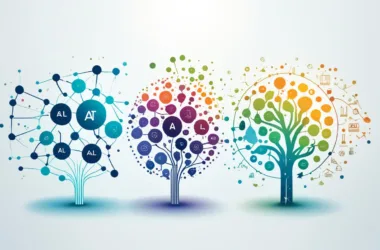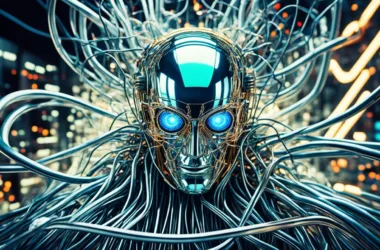Artificial Intelligence (AI) has become an integral part of our daily lives, from virtual assistants like Siri and Alexa to self-driving cars and personalized product recommendations. Yet, the process of AI learning remains shrouded in mystery. How do machines acquire the intelligence to perform tasks that typically require human cognition? In this blog post, we’ll delve into the world of AI learning and explore the crucial components that make it possible: training data, algorithms, and models.
Unveiling the Learning Process
AI learns by mimicking the human learning process – through experience. Just as we acquire knowledge and skills by experiencing the world around us, AI systems learn from vast amounts of digital experiences. This experience comes in the form of training data, which serves as the foundation for AI learning.
Here’s a deeper dive into the analogy:
- Human Learning: Imagine a child learning about animals. They see pictures in books, visit zoos, and observe pets. Through these experiences, the child builds a mental model of what animals look like, how they behave, and their different characteristics.
- AI Learning: An image recognition AI tasked with identifying animals is presented with a massive dataset of labeled images. These images contain various animals in different poses, backgrounds, and lighting conditions. By processing this data, the AI learns to recognize patterns and features that distinguish different animals, similar to how a child builds a mental model.
The Importance of Training Data:
The quality and quantity of training data significantly impact the effectiveness of AI learning.
- Quality: Imagine a child learning about animals from poorly lit, blurry photos. They might struggle to distinguish key features. Similarly, AI models trained on low-quality data with errors or inconsistencies will have difficulty learning accurately.
- Quantity: The more experiences a child has, the more refined their understanding becomes. Likewise, the more training data an AI model processes, the better it becomes at recognizing patterns and performing its task.
In essence, training data provides the building blocks for AI knowledge. The more diverse and accurate this data is, the more capable the AI becomes.
Demystifying Training Data
Training data acts as the fuel for AI learning. It consists of vast amounts of digital information used to train AI models. This data can come in various formats, depending on the specific task the AI is designed for:
- Images: Facial recognition AI, for example, thrives on millions of images of faces. Each image is meticulously labeled with the individual’s identity. This allows the AI to learn the intricate details of facial features and how they vary between people.
- Text: Sentiment analysis AI is tasked with understanding the emotional tone of written content. To achieve this, it’s trained on massive datasets of text data, meticulously labeled as positive, negative, or neutral. By processing this data, the AI learns to identify keywords, sentence structures, and emotional cues associated with different sentiments.
- Audio: Speech recognition AI requires a different type of training data: audio recordings of people speaking. These recordings are paired with their corresponding transcriptions, allowing the AI to learn the relationship between spoken words and their written forms. It also learns to distinguish accents, pronunciations, and background noises.
- Other Formats: Training data can also encompass other formats like sensor data, video recordings, or even virtual simulations. For instance, an AI designed to control a robot might be trained on data from motion sensors, cameras capturing the robot’s movements, and virtual environments where it can practice tasks.
The quality and quantity of training data directly impact the effectiveness of AI learning:
- Quality Matters: Imagine a child learning about animals from poorly lit, blurry photos. Their understanding of animal characteristics would be hindered. Similarly, AI models trained on low-quality data with errors or inconsistencies will struggle to learn accurately. The data needs to be well-labeled, diverse, and representative of the real world the AI will encounter.
- Quantity is Key: The more experiences a child has, the more refined their knowledge becomes. Likewise, the more training data an AI model processes, the better it becomes at recognizing patterns and performing its task. A vast amount of data allows the AI to identify subtle variations and nuances within the information it’s processing.
In essence, training data provides the foundation for AI knowledge. The more diverse, accurate, and voluminous this data is, the more capable and adaptable the AI becomes.
The Role of Algorithms
Algorithms are sets of instructions that guide the learning process, transforming training data into usable knowledge. Different algorithms are suited for different tasks, such as:
- Classification: deciding whether an image is a cat or dog
- Prediction: forecasting stock prices based on historical data
- Clustering: grouping similar customers based on behavior
Popular AI algorithms include:
- Decision Trees: a tree-like model that splits data into decisions
- Neural Networks: a model inspired by the human brain, with interconnected nodes
Building the Brains: AI Models
AI models are essentially the software brains of AI systems. They represent the culmination of the learning process, embodying the knowledge gleaned from training data and the guidance of algorithms. These models are not static entities; they continuously improve their performance through exposure to new data and refinement of their internal structures.
Here’s a deeper look at how AI models work:
- Learning from Experience: Imagine a child learning to ride a bike. Through trial and error (experience), they gradually improve their balance, coordination, and control. Similarly, AI models learn by processing vast amounts of training data. As they encounter new information, they identify patterns, relationships, and features within the data. This allows them to make predictions, classifications, or decisions based on the learned knowledge.
- Refining the Structure: Internally, AI models are often composed of complex networks of interconnected nodes. These nodes and their connections represent the “knowledge” the model has acquired. Through a process called model training, these connections are constantly adjusted based on the model’s performance. When the model makes an error (e.g., misclassifies an image), the connections are tweaked to minimize these errors in the future. This process is akin to the child refining their bike-riding skills through practice and adjustments.
- Continuous Improvement: As AI models are exposed to more data, they continuously refine their internal structure, becoming more accurate and adept at their tasks. Imagine the child cyclist becoming more confident and skilled with practice. Similarly, with more data, the AI model can handle increasingly complex situations and variations within the data it encounters.
Putting it All Together: An Example
Consider a self-driving car, which learns from vast amounts of driving data using specific algorithms, resulting in a model that can navigate roads. The car’s AI system processes training data from various sensors and cameras, refining its model over time to make better decisions.
- Training data: millions of miles of driving data, labeled with actions taken by human drivers
- Algorithm: a deep learning model that processes visual and sensor data
- Model: a software representation of the learned knowledge, capable of navigating roads and responding to situations
Conclusion
In summary, AI learns from training data, algorithms guide the learning process, and models represent the learned knowledge. As AI continues to advance, we can expect to see more innovative applications across industries. We hope this post has demystified the AI learning process, inspiring further exploration of this exciting field. Stay tuned for future blog posts exploring specific AI applications and their potential to transform our world.






